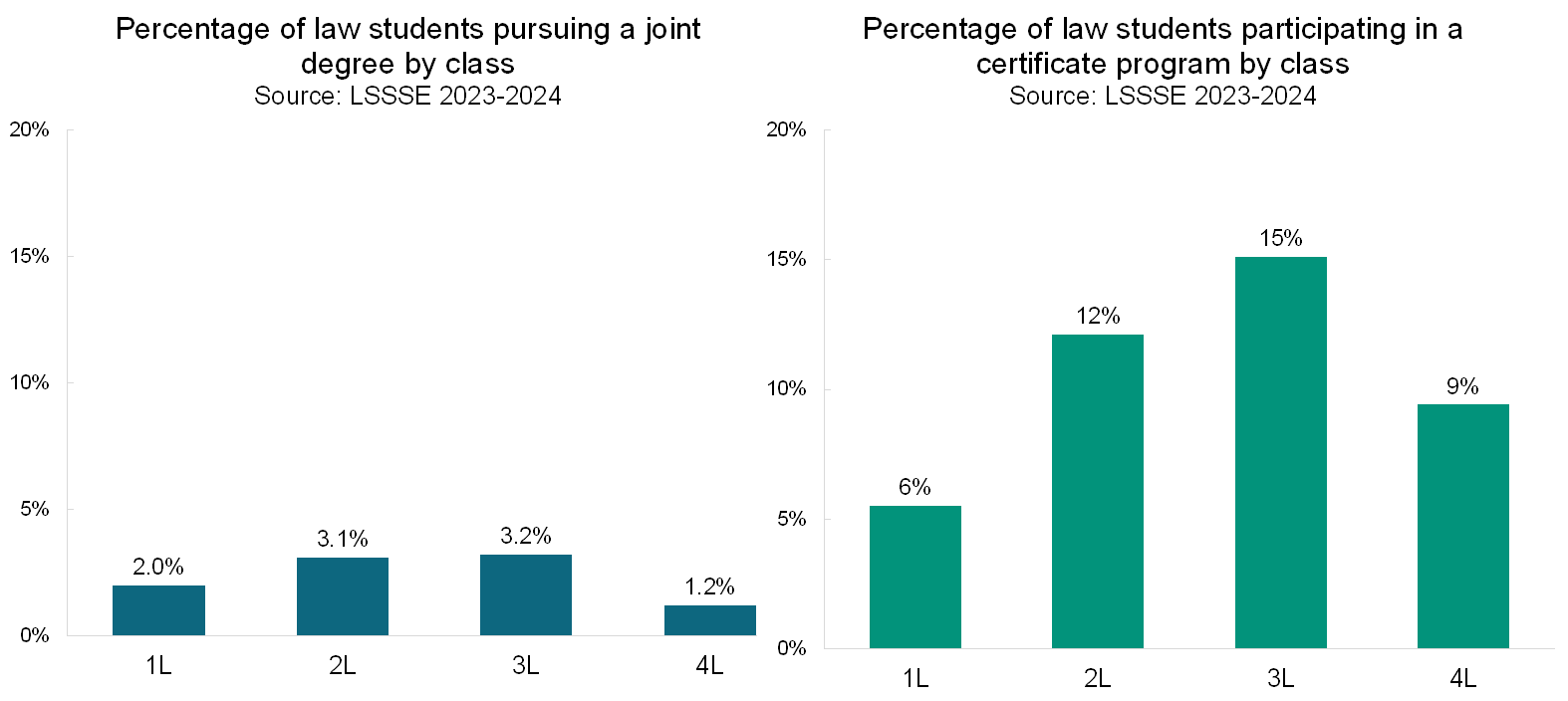Joint Degree and Certificate Programs
Law students may choose to pursue a joint degree or a certificate to enhance their academic and professional credentials by acquiring specialized knowledge and skills that complement the standard legal education. A joint degree program allows a student to earn two degrees in less time and with fewer credits than if they pursued each degree separately. Joint degree programs, such as those combining a Juris Doctor (JD) with a Master of Business Administration (MBA) or a Master of Public Administration (MPA), offer a comprehensive understanding of related fields, which broadens career opportunities and provides a competitive edge. Similarly, certificate programs in areas such as intellectual property law, environmental law, or international human rights allow students to gain targeted expertise that can be applicable in their future legal practice.
Just under three percent of LSSSE respondents were completing a joint degree in 2023 and 2024. Joint degree programs are often quite specific to the unique offerings of a particular law school. In fact, the most popular joint degree program on the survey is “Other, specify.” Of the LSSSE-provided options, the combined JD/MBA is by far the most popular choice among joint degree students (30%), followed by the JD/LLM (13%), the JD/MA (7%), and the JD/MPA (6%). Only 2% of joint degree students are pursuing a JD/PhD.

Certificate programs can provide additional content knowledge without the commitment of another entire degree, which makes them a somewhat more popular option. Nearly 11% of LSSSE respondents were pursuing a certificate in 2023 and 2024. The most common certificate program specializations included Health Law, Intellectual Property Law, Business Law, and Environmental Law.

Law students appear to add on certificates as they progress through law school. Only 6% of 1Ls were pursuing a certificate, but among 3Ls, that number rose to 15%. It may be that 1L students do not realize the value, availability, or relative ease of completion of certificates during the course of completing their law degrees and only add them on once that has been made clear to them. This may signal that law schools could advertise their certificate offerings more clearly to prospective and incoming students. Interestingly, there is also a small difference in the percentage of students who are pursuing joint degrees across their years in law school. Around 2% of 1L students were completing a joint degree, compared to 3.2% of 3L students.
 By completing joint degree programs and earning certificates, law students can demonstrate their commitment to interdisciplinary learning and their ability to integrate legal principles with other subject areas. These students ultimately enhance their versatility and effectiveness as practitioners in a complex legal landscape.
By completing joint degree programs and earning certificates, law students can demonstrate their commitment to interdisciplinary learning and their ability to integrate legal principles with other subject areas. These students ultimately enhance their versatility and effectiveness as practitioners in a complex legal landscape.

